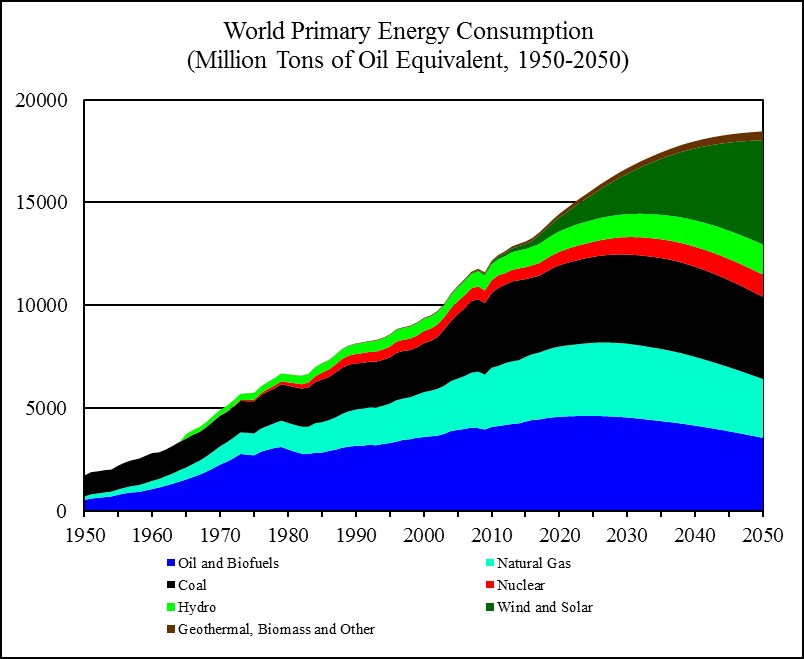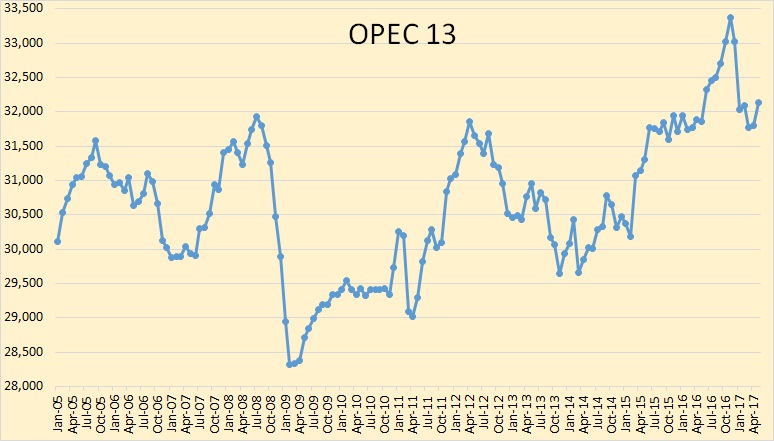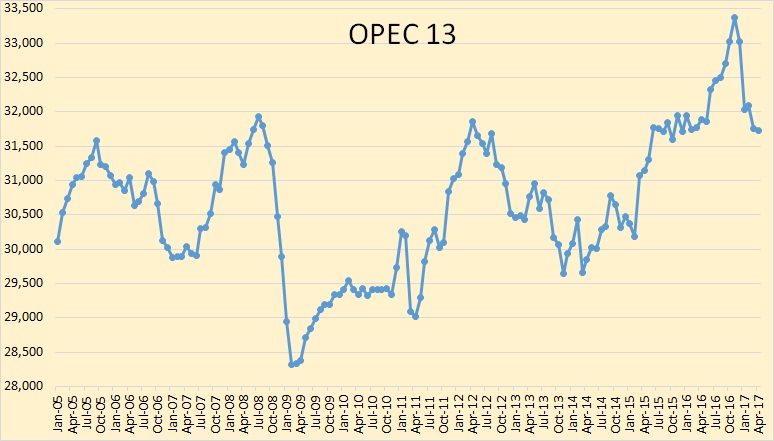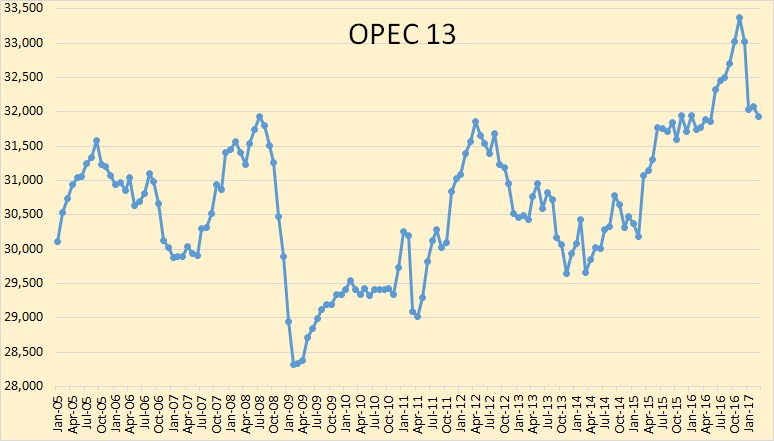All data below is based on the latest OPEC Monthly Oil Market Report.
All data is through June 2017 and is in thousand barrels per day.
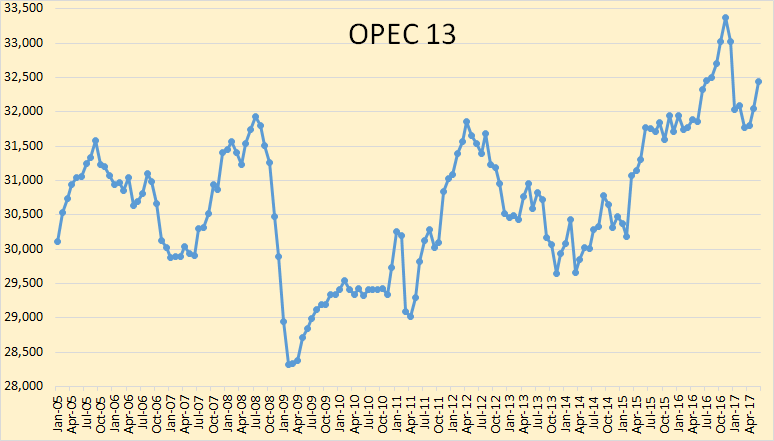
The above chart does not include the 14th member of OPEC that was just added, Equatorial Guinea. I do not have historical data for Equatorial Guinea so I may not add them at all. It doesn’t really matter since they are only a very minor producer. Also, they are in steep decline, dropping at about 10% per year.
